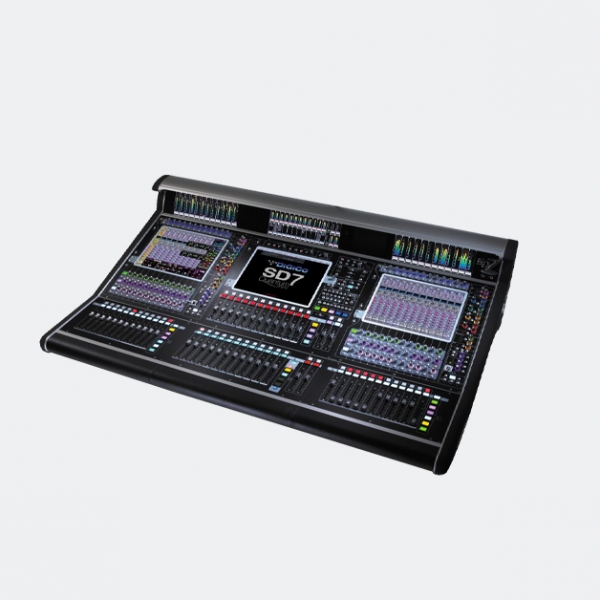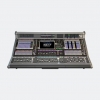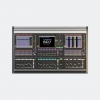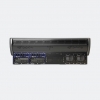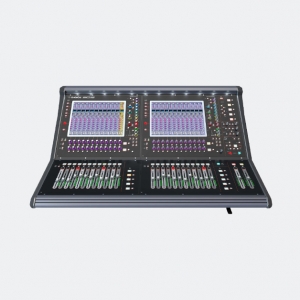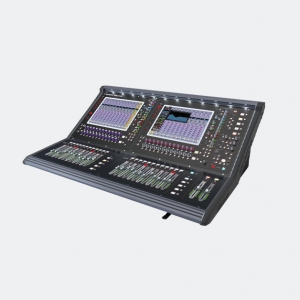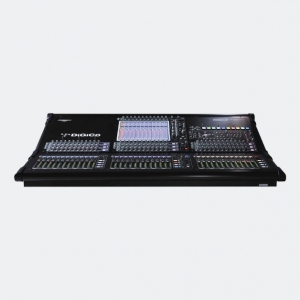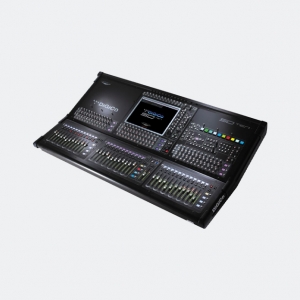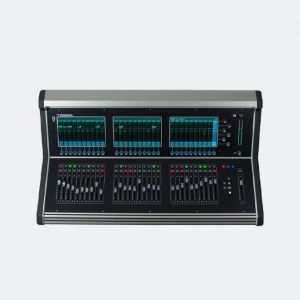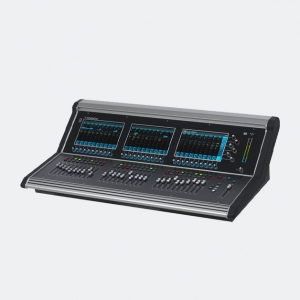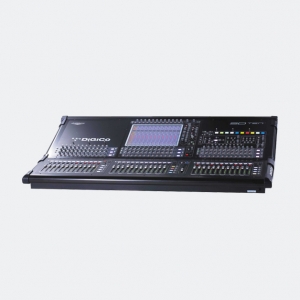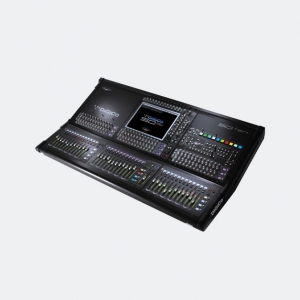Description
SD7 Quantum: Own The Room.
The fastest, smartest console ever created, SD7 Quantum delivers the functionality, audio performance and sheer scale required to deliver the largest productions now and in the future. With SD7 Quantum, you have the power to tackle any challenge and truly own the room.
Built to exceed the ambitions of tomorrow’s touring productions, SD7 Quantum breaks the barrier of seventh generation FPGA technology to deliver a dramatic leap forward in power and connectivity. All of this can be added to your existing SD7 surface, ensuring rental partners benefit from an even longer return on investment.
The result is a revolution of possibilities that towers above every other mixing platform available today.
Quantum – The Power of Three
Where once it was impossible to efficiently build an engine with more than one FPGA, now SD7 Quantum brings you the extraordinary might of three large-scale FPGAs working in unison.
Inside the Quantum engine, up to 2,000 channels can be transported across 688 processing paths at 96kHz. New GTX ports run at 6.6GHz while simple two wire connections ensure the fastest possible data speeds to reach a new pinnacle in mixing capability. Fully scalable and designed to communicate seamlessly with the next generation of FPGAs, the Quantum engine is a uniquely formidable platform for an ambitious industry.
Under The Hood
SD7 Quantum places the world’s most flexible and feature-rich mixing experience at your fingertips. Standard channel processing across both inputs and outputs includes Channel Delay, DiGiTuBe, Single and Multi-Channel Presets, Dual insert points, Hi- and Lo-pass filters at 24dB/octave, four-band parametric EQ (eight on outputs) with band curve selection and Dynamic EQ on each band, DiGiCo’s DYN 1 (Compressor, De-esser or Multiband Compressor) and DYN 2 (Gate, Compressor or Ducker).
All of this is before the arrival of Mustard Processing, a fully integrated suite of additional processing that can be assigned to any strip to boost your mix with a range of modelled preamps, vintage dynamics units and EQ sections, all only a touch away.
The master section incorporates 48 gangable 48 band graphic EQs, 48 stereo effects, and 36 control groups (VCAs); using snapshots, you can now switch between complete configurations in any live environment more quickly and easily than ever before, be it during rehearsals, set-up or even mid-show.
In addition, 128 busses are assignable as mono/stereo groups or auxiliaries, while a 48×48 output matrix, dual solo busses with True Solo, and a LR/LCR/5.1 Master buss is available for even deeper configurability.
Last but not least, with the inclusion of patented Nodal Processing, engineers now enjoy more creativity than was previously possible – for the first time, processing can be applied to any node on the auxiliary section of the console, allowing engineers to send unique processing on each send from single or multiple channels.
SD7 Quantum Features
There is an arm processor, which handles all the communications between the host PC and the FPGA core; it’s the translator that communicates all the work surface flow to the core processor
There are now three fourth-generation SHARCS controlling the interpolation algorithms in the FPGA to produce that warm analogue feel, which will make a significant difference to any engineer.
Nodal Processing: The patented Nodal Processing appreciates the demands on monitor engineers and sound designers to be able to provide creativity not only on the channels but actually on each node of an aux buss. A full complement of processing can be allocated to the send allowing a unique mix tailored for the artist or the audience.
True Solo: Allows the operator’s monitoring system to replicate almost any section of the console, and how that source is being processed and heard. This saves time and speeds up the process of managing the potentially daunting number of channels and busses available to the user.
I/O
The SD7 Quantum is renowned for its heavyweight I/O, and with good reason.
Local I/O: SD7 Quantum’s local I/O includes 12 analogue inputs, 12 analogue outputs and 12 AES I/O (mono)
Optocore: The amount of connectivity is very special. SD7 Quantum comes as standard with one Optocore fibre loop, which is 504 channels of audio; there can be up to 14 DiGiCo racks, or a combination of racks and tie-lines around the loop; and there is an option to upgrade to dual loop, which allows for 1,008 Optocore channels of audio and 28 racks running.
UBMADI: In addition, the engine has a 48-channel UBMADI, so you can connect any laptop via USB and get 48 channels of recording and playback.
DMI: We have also incorporated two dedicated DMI slots to accommodate the growing family of DiGiCo DMI card options. Allowing the console connectivity to be configured for the demand of the tour or event, so you could plug in a Dante module, or the latest automatic mic mixing module. Each dedicated DMI slot provides you with an additional 64 I/O.
Waves: There is also Waves connectivity if you want to utilise SoundGrid processing, giving you a total of 128 additional I/O.
The console of tomorrow, available today – step up to SD7 Quantum and own the room!
